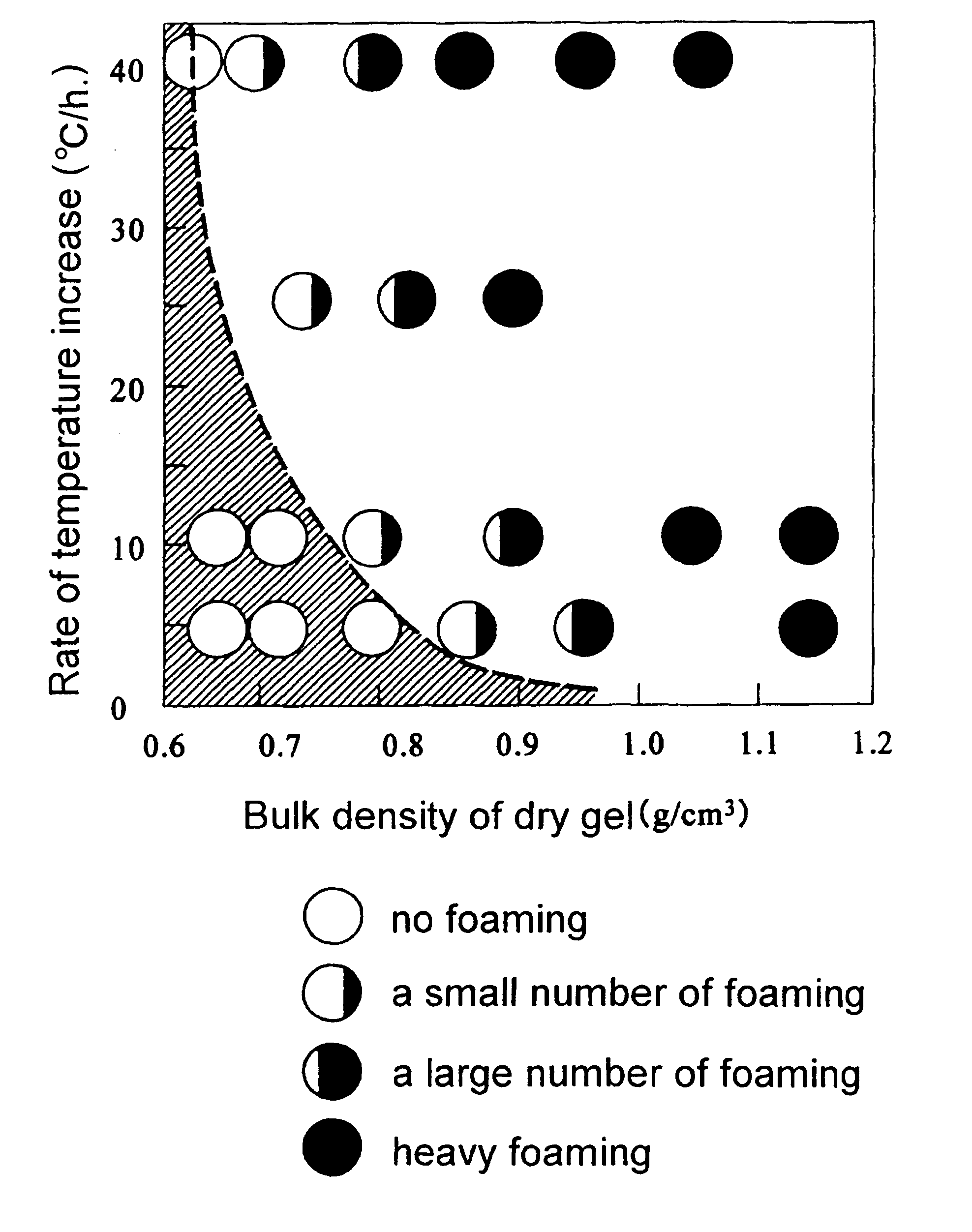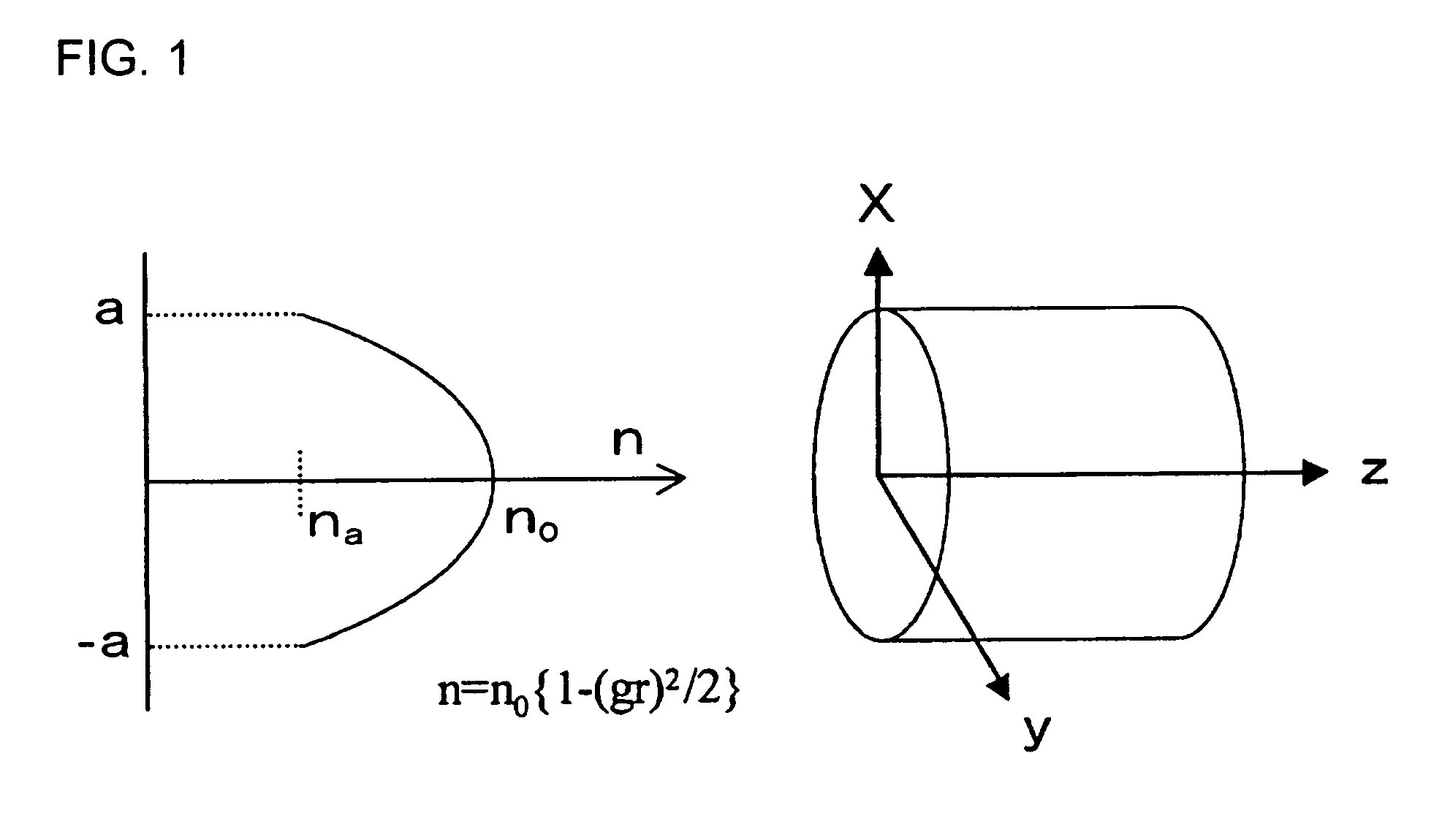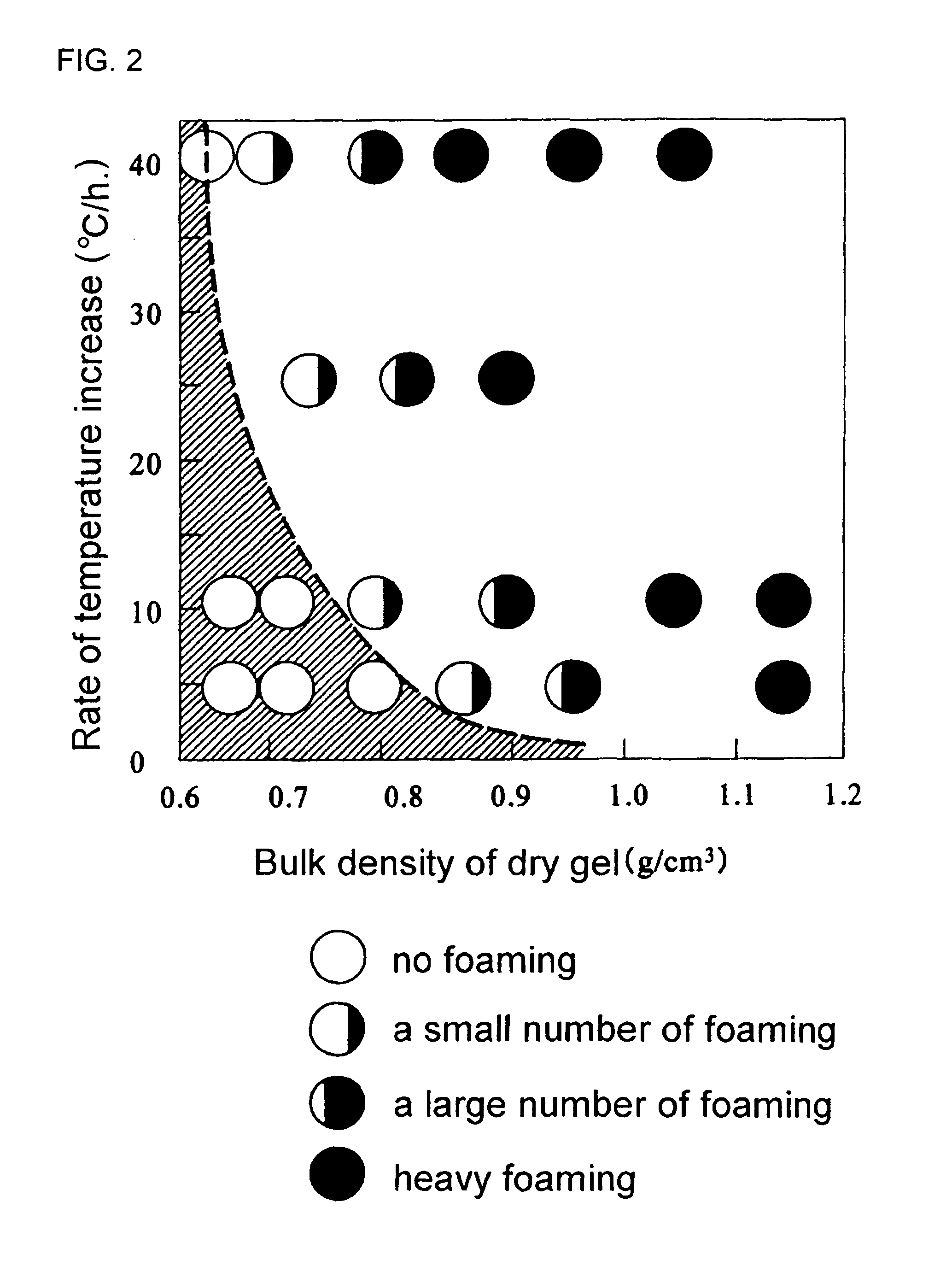Method for manufacturing grin lens and grin lens
a technology of grin lens and grin lens, which is applied in the direction of manufacturing tools, instruments, lenses, etc., can solve the problems that the small diameter grin lenticular optical fiber cannot be stably produced, and achieve the effects of small diameter, efficient and easy manufacturing, and large numerical apertur
- Summary
- Abstract
- Description
- Claims
- Application Information
AI Technical Summary
Benefits of technology
Problems solved by technology
Method used
Image
Examples
example 1
[0032] 64.7 g of tetramethoxysilane (TMOS) was combined with 39.16 g of ethanol, 18.27 g of dimethylformamide (DMF) and further 7.76 g of 0.056 N hydrochloric acid, and mixed. Thereafter, 25.53 g of titanium tetrabutoxide was combined with 39.74 g of ethanol and 18.27 g of DMF was dripped and mixed while agitating. The solution was dripped with 28.37 g of distilled water (water) and 24.76 g of ethanol, and mixed to make a sol liquid. This sol liquid was poured in a test tube having an inner diameter of 14 mm, sealed with aluminum foil, then placed in a thermostatic chamber at 60° C. for 5 days, and aged. Gel completing the aging process was immersed in 1.5 N hydrochloric acid for 3 hours to form a concentration distribution on a Ti component, then immersed in water for 24 hours and washed. The washed wet gel was repeatedly immersed in 1.5 N hydrochloric acid for 6 hours to form the concentration distribution on the Ti component, then immersed in ethanol for 24 hours and washed. The ...
example 2
[0037] 64.7 g of tetramethoxysilane (TMOS) was added with 39.16 g of ethanol, 18.27 g of dimethylformamide (DMF) and further 7.76 g of 0.056 N hydrochloric acid, and mixed, thereafter, 41.0 g of tantalum ethoxide added with 39.74 g of ethanol and 18.27 of DMF was dripped and mixed while agitating. The solution was dripped with 28.37 g of distilled water (water) and 24.76 g of ethanol, and mixed to make a sol liquid. This sol liquid was poured in a test tube having an inner diameter of 14 mm, sealed with aluminum foil, then placed in a thermostatic chamber at 60° C. for 5 days, and aged. The gel completing the aging process was immersed in a 0.1% hydrofluoric acid aqueous solution for 6 hours to form a concentration distribution on a Ti component, then immersed in water for 24 hours and washed, and further immersed in ethanol for 24 hours and washed. The gel completing the washing process was removed, placed in the thermostatic chamber at 60° C. for 5 days and in the thermostatic cha...
PUM
| Property | Measurement | Unit |
|---|---|---|
| partial pressures | aaaaa | aaaaa |
| temperature | aaaaa | aaaaa |
| diameter | aaaaa | aaaaa |
Abstract
Description
Claims
Application Information
 Login to View More
Login to View More - R&D
- Intellectual Property
- Life Sciences
- Materials
- Tech Scout
- Unparalleled Data Quality
- Higher Quality Content
- 60% Fewer Hallucinations
Browse by: Latest US Patents, China's latest patents, Technical Efficacy Thesaurus, Application Domain, Technology Topic, Popular Technical Reports.
© 2025 PatSnap. All rights reserved.Legal|Privacy policy|Modern Slavery Act Transparency Statement|Sitemap|About US| Contact US: help@patsnap.com



